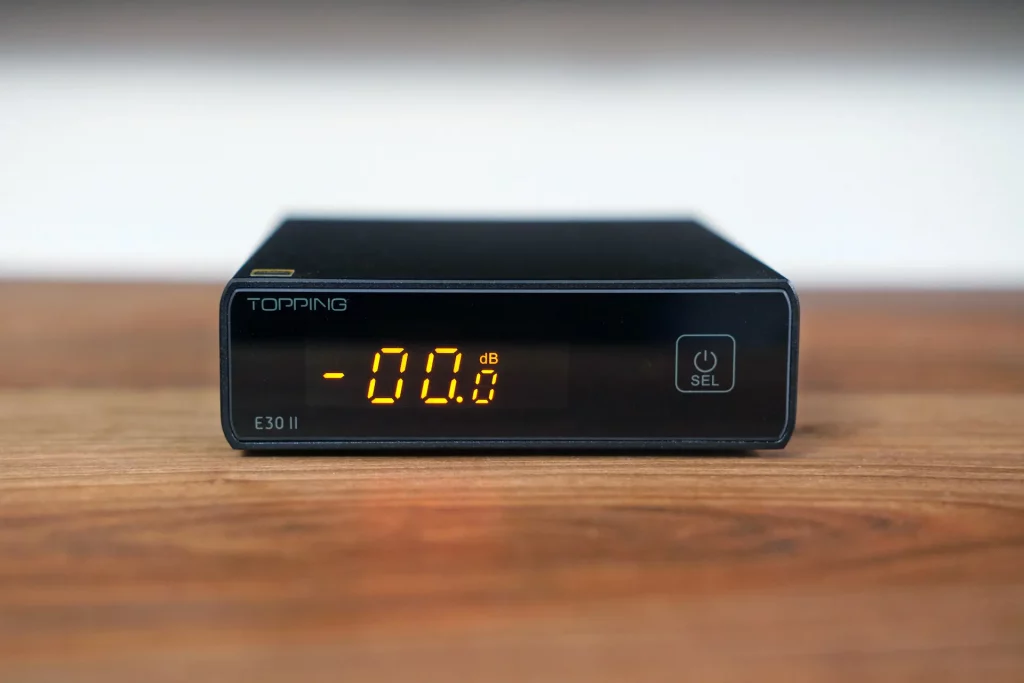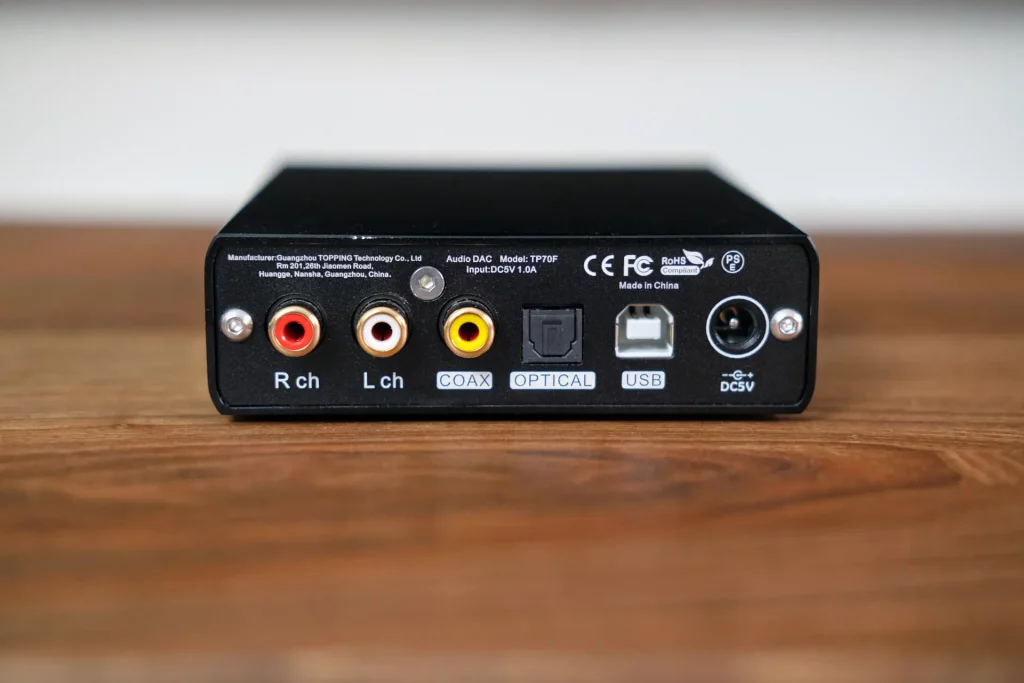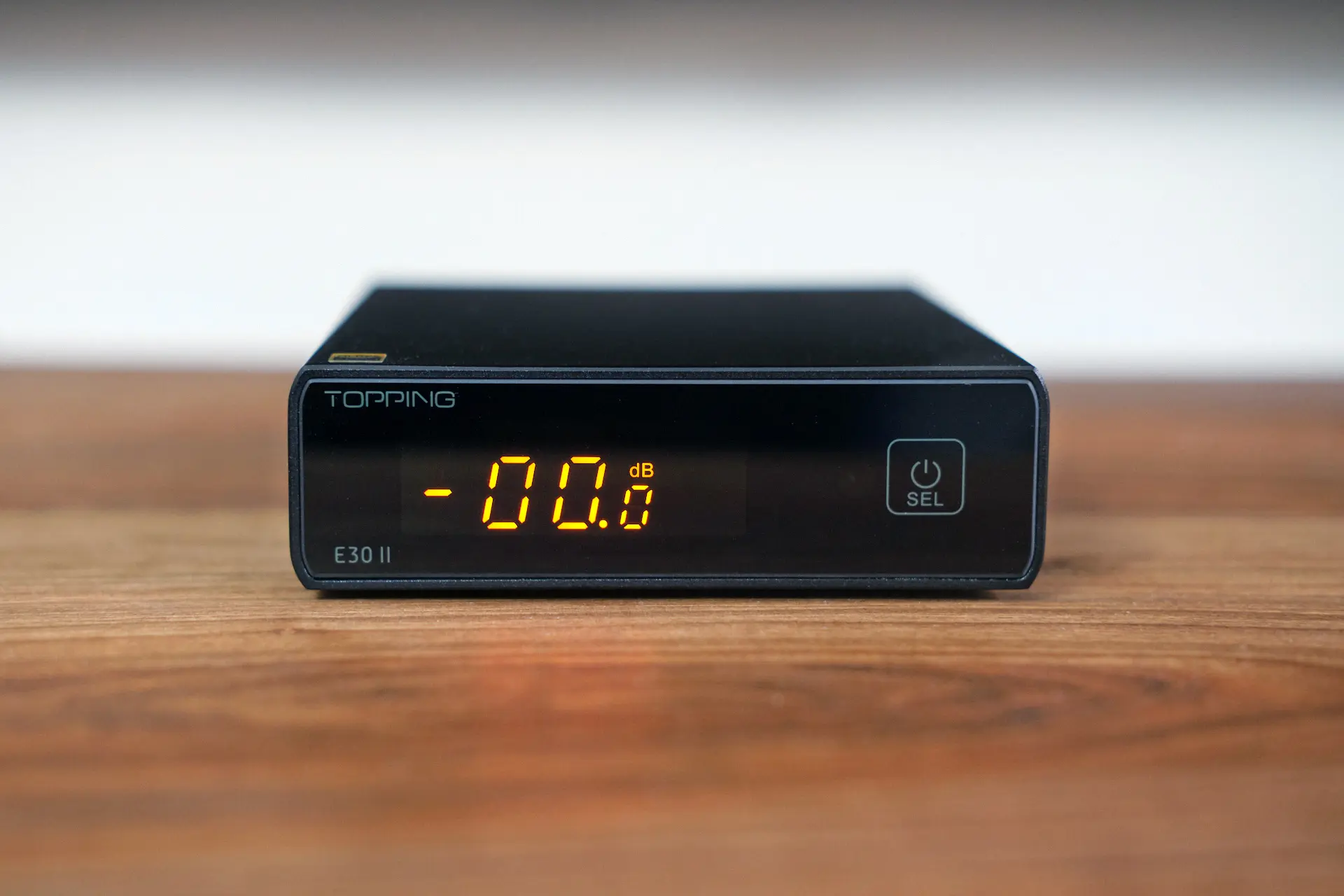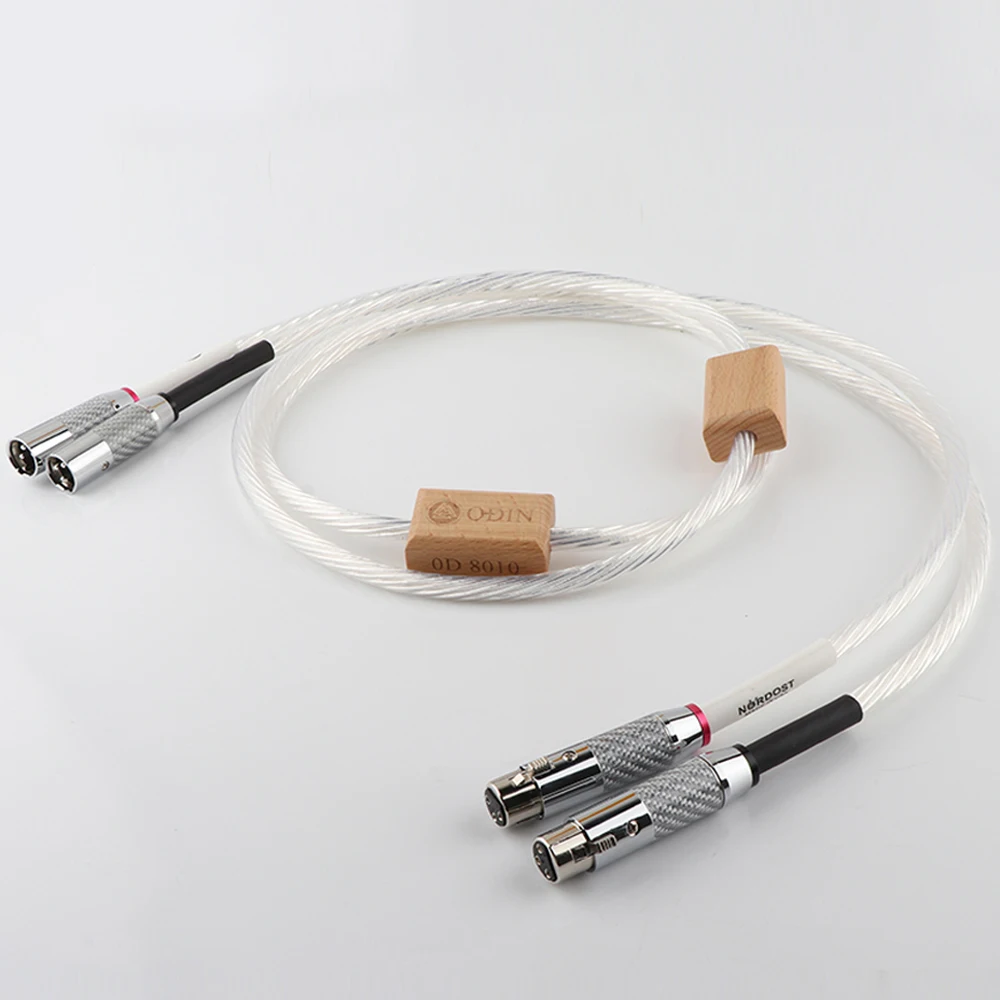Original Topping E30 was a really good DAC, bringing the previously unheard level of performance to that low price point. Can the new Topping E30 II do the same for the second time? Let’s find out.
Build and Features
I have never seen a Topping device that was not built well and felt sturdy. I didn’t expect the company to break that tradition with their second iteration of E30, and they sure didn’t. Just like its predecessor E30 II is enclosed in a sturdy aluminum case. The front of the device has a clean look and a functional layout. The OLED display hasn’t changed. Browsing through settings using touch sensitive button is functional. There is a remote provided too and it does make controlling this unit quicker and more intuitive.
When it comes to the inputs, we have the usuals: USB which comes in the form of USB-B, Optical Toslink, and Coaxial SPDIF. That would be it, pretty decent connectivity at this price point I would say. As for the analog outputs, there’s a pair of single-ended RCAs and no balanced outputs which is perfectly normal at this price point. A remote control is also included which makes using variable analog outputs much easier. Yes, that means you can hook this DAC directly to a power amp that doesn’t have any volume control itself and set it using the DAC’s volume attenuation. It won’t be as good as using a dedicated preamp (or simply an integrated amplifier) but it will serve its purpose if needed.


The whole DAC is based around the Asahi Kasei AK4493S DAC chip, actually two of them. Then the powerful signal processor XMOS XU208 is added and together this combination will support very high-resolution files up to 768 kHz PCM and DSD512 native. But how does all of that actually sound in action?
Sound
If you’re only familiar with the brand’s earlier offering you might expect this one will mainly focus on high frequency details and forget about tone fullness, but that isn’t the case. Topping E30 II took a turn from what one would consider Topping’s house sound signature. Bassline is both weighty and punchy, giving a very bold character to the sound. Fortunately, it is also well-controlled and can move fast when it needs to. Thick and energetic lower notes, however, don’t spill into the midrange that is very clean and crisp, but subtle enough so it never oversteps into sharpness. High frequencies rendering is equally clean but somewhat laid back and darker in nature. This creates an unusual tonality for a Topping DAC but given how bold and palpable all instruments and vocals sound.
The soundstage is not particularly wide and spacious, but inside its boundaries, E30 II creates a very decent sensation of three-dimensional space, dark background, and well-layered tones. The sound is not particularly forward but it’s not laid back either. Also, that bold tonality lends a hand to making everything in between your speakers sound physically present and believable.
All in all, Topping E30 II is capable of creating a clean, bold, and energetic sound. It’s a bit bass-heavy but in a pleasant way, a bit dark up top, but believably three-dimensional and palpable. This is a contrast from many previous Topping offerings in this price range that sounded flatter, brighter, and sharper.
Comparisons
Topping E30 that came before is the logical first comparison. This is a DAC that sounds very open and revealing but the DAC market moved fast in the few years since its release. E30 II went in a different direction with a more bassy and darker tonality, and that is a thing of preference and system matching, but in all other regards it brought very clear sonic upgrades. Compared directly to E30 II the original will now sound lean and almost anemic with flatter soundstaging and dynamics.
SMSL DO100 is a slightly more expensive DAC that offers a softer and warmer sound signature as opposed to a more energetic and cleaner, but also more analytical approach of Topping E30 II. Choosing between these two DACs boils down to personal preference more than anything else. In that light, I’ll just say that I do prefer Topping E30 II in this case. It does sound slightly cleaner and neater tone to my ears without ever going too much into sharpness and overanalyzing music. You might feel differently and that’s OK.
Topping E50 is an older and more expensive brother that’s slightly richer in terms of connectivity. It also offers different sound signature, one would argue a more neutral one. E50 is more open up top, more airy if you will, and slightly less emphasized in the bass region. This makes it sound more neutral but it is not a clear win as one might think. E30 II is a newer product and has a few aces up its sleeve too. For example, it creates a slightly darker background and slightly more three-dimensional tones. So there’s no clear winner here in my opinion, just different flavors in the same performance tier and it’s up to you to choose which one would suit you and your system better.
Conclusion
If Topping E30 II is any sign of what is to come from the Topping in the future, I can’t wait to see it. This is a wholesome sounding piece of HiFi that brings a previously unseen price-to-performance ratio to this affordable DAC tier. An easy recommendation.
Note: If you wish to read about the matching Topping L30 II headphone amp, please go to its review here: Topping L30 II review.
| TOPPING E30 II – CHARACTERISTICS |
Product highlights
Specs
|






As someone on a limited budget whose hifi is built from older units, the Topping makes a great addition. The DAC on a Popcorn Hour A-400 is not up to the level of detail and accuracy that the Topping is.
The one problem is the instructions are next to non existent. They could do with someone writing some proper instructions. The faff to get it from pre-amp to DAC is unreal trying to understand the official instructions. Google is your friend!
Hello mr. Stojanović.
If u have it in memory, are you able to compare line out sound of E30 II and Pro-Ject Pre Box S2 Digital? I blowned out my Pro-Ject Pre Box S2 Digital and now (because new ones are “little” overprized i my country (Czech Republic), i am thinking about E 30 II as a replacement. Is it reasonable decision in your opinion, or it is totally nosence.
Thank you (even for your reviews on YT) and sorry for my bad english.
It was a long time ago that I tested S2 digital and didn’t use it for a long time, so it is very difficult to compare them. I believe that E30 II will have a bit fuller bassline and maybe a touch more energetic sound but don’t take this as definitive truth.
PS : (sorry for it, but here is not an edit posibility) I have read and seen on yt your reviews of both of these devices but i would like a direct comparison if it is possible.
Thank you again.